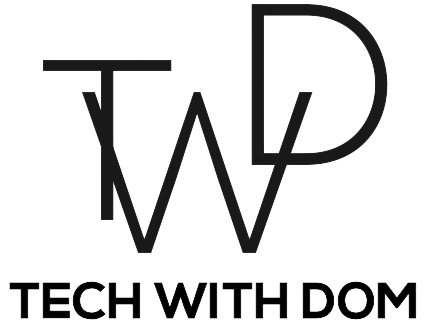6 Awesome FREE Tools I Use For Blogging
Every Blogger Should Use These!

I’ve been blogging for well over a year and I just realised I haven’t shared any of the tools I use for writing blog posts, which is strange because I talk about them in my content.
I started posting regular blog posts to my website and Medium at the start of January 2021. Before then, I was just casually posting as a hobby. Since January, I’ve been aiming to post at least 1 article per week alongside my full-time 9 to 5 job.
It’s almost been a year since I made that commitment to myself and I’m astonished at how fast I was able to grow a sizeable following on Medium and on my weekly newsletter. During that time, I also turned my hobby into a profitable side hustle, something I’ve always dreamed of doing!
Anyway, the internet is full of great free tools that can be used for blogging and the best part is that some of them are free!
That’s why I decided to share the tools I use for writing blog posts. So without any further ado, here are 6 awesome free tools I use for Blogging…
1. SimpleNote
I’ve actually recently switched to SimpleNote from Ulysses, which I decided to do as I work from a multiplatform ecosystem and the only compatible device I currently own is my iPad Pro, which I don’t always have with me.
I’ve mainly switched to see if SimpleNote can become a decent substitute, but my favourite app for writing blog posts at present still is Ulysses and I still use it from time to time when working from my iPad.
With that in mind, SimpleNote is currently at the heart of my blogging tool kit. I use it for writing the first copies of all my blog posts, I then either copy and paste the markdown text into the WordPress editor if I’m on my Windows PC or I share it to the WordPress app on my iPad or on my phone, this process uploads it to WordPress.
I don’t know what it is about the app, but typing on SimpleNote feels really nice which could have something to do with the beautiful minimal interface.
2. Grammarly
When typing we all make mistakes, especially when typing fast, that’s why I use a tool called Grammarly to check over my work to ensure that my readers can understand what I’m typing.
Grammarly is basically an online writing assistant that checks your work for spelling, grammar, punctuation, clarity and engagement. But to get the full features, you have to pay for a subscription which can be pretty expensive! I just use the free version and I have it installed practically everywhere!
Since SimpleNote doesn’t have a revision feature built in, I use Grammarly from the WordPress editor and it actually works incredibly well!
I’ve been using Grammarly for years now and I honestly believe it has helped me become a better writer. I found it especially helpful when writing both of my university dissertations, back then I actually subscribed to the full version as I was writing some of the most important pieces of work during my time at university and it was worth it!
It allowed me to triple-check my writing to ensure I am using the correct grammar and punctuation and on top of that it ensured that my tone stayed academic. It also has a built-in plagiarism checker which helps you ensure that you are within the limits of what is allowed.
Overall a very useful app, even in the free version!
3. Canva
I must admit when it comes to making graphics for my blog or YouTube channel, I was always a fan of Adobe Fireworks (starting to show my age now), it was perfect for the job and I knew the ins and outs of the software as I was brought up on it at school.
Sadly the days of Adobe Fireworks are over and Canva is a great alternative. I like the fact that you can build on top of templates which can be particularly useful if you’re stuck for ideas.
Just like with Grammarly, I use the free version of Canva, it’s perfectly capable although the premium version does have some pretty cool features such as premium templates and the ability to add custom fonts, which can be useful for some.
I tend to mainly use Canva for creating cover photos for blog posts as well as YouTube thumbnails, but there are endless uses for it and you can create some stunning things with it!
4. TinyPNG
TinyPNG is a tool you may have not heard of yet, but it’s possibly one of the most useful tools on this list! It’s basically a free service that optimises your images before you upload them to your blog.
It works by you simply uploading your image to the website and from there it will optimise your image which will make it the perfect size and quality to upload to your blog.
It’s especially useful because photos and images can be unnecessarily large. Images that are better optimised allow web pages to load faster, which enhances the reader’s experience.
The truth of the matter is that there are many tools that can do this but I like TinyPNG due to its speed, simplicity and no-nonsense approach.
I tend to use this service before uploading any form of photos or images to my website or Medium blog and I have seen a noticeable improvement in page load times!
In the past, I used plugins to do this for me automatically, but I was never too sure whether they were actually working or not and at least now I am confident that my images are optimised.
5. Google Drive
As someone who writes blog posts from several devices, being able to store content in one place is important. That’s where cloud storage solutions such as Google Drive come in.
I have a confession to make, at present, I actually use the paid version of OneDrive as it suits my needs better, especially the family subscription which not only gives my family 1 TB of storage space in the cloud but I also have a dedicated account for backups.
However, in the past, I just used the free version of Google Drive which gives you a generous 15GB of free cloud storage.
I tend to travel a lot for my full-time job and being able to write content on the go is important to me, whether it’s on my iPad, my phone or even my laptop, sometimes I need access to files such as photos, documents and even spreadsheets to help me write blog posts. Cloud storage allows me to do this easily!
6 Google Docs Productivity Tips That Changed My Life
6. Notion
Notion is a tool I recently started using again following the purchase of Thomas Frank’s Creator’s Companion, which has revolutionised my workflow as a part-time content creator.
At present, I use Notion exclusively for planning and managing my content as well as managing my side hustle. I don’t really use it for anything else, I guess I haven’t created or found a system that works for me yet.
In its basic form, Notion provides some incredibly useful tools such as Kanban boards which I use for keeping track of my content and the stage it’s in. The Creators Companion helps me out pretty well in this department as it allows me to use each Kanban block to plan out my content.
I’ve actually customised the Creators Companion to match my needs and one of the things I added is ratings in the title of each Kanban block. This is something I learned from Mark Ellis and his book; How to make $2,000+ every month on Medium, which is highly worth a read!
In his book, Mark talks about adding a rating column to a brain dump spreadsheet and the idea is that you add a bunch of ideas and give them ratings from 1 to 5, 1 being content you need to publish now and 5 being content you should still publish but after you publish all the ratings above.
I’ve migrated this system into they Creators Companion Kanban chart and it helps a lot when planning what to write next.
The Creators Companion actually has a content validation feature which allows you to validate your content, which is something I still use, but I still use Mark’s rating system on top of it, especially when coming up with ideas.
Thomas Frank’s Creators Companion does cost, but he does offer a free template called Video Project Tracker Template, which you can customise and turn into a basic blog post tracker.
Why I Moved Away From Notion – 1-Year Update
Conclusion
When it comes to blogging, I use several tools, these are just some of my favourites. The truth of the matter is that I discover new tools all the time and if I was to talk about all of them, I would probably have to write a book!
But I love discovering new tools and techniques for making my work even better, and I bet many of you are in the same boat, that’s why I want to know what your favourite tools are for blogging. Both free and paid are welcome! So let us know your tools down in the comments!
